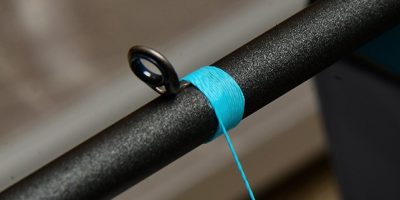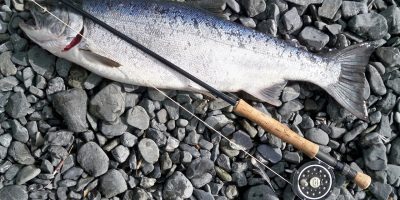Catching your own fish may be a rewarding experience that allows you to acquire a new skill. It may be a wonderful opportunity to spend with your loved ones and get to know them better. However, just like anything else in the world, there are limits to how big and little the fish you capture may be carried home.
Varied varieties of fish have different suitable sizes that you can bring home with you. Some fish species have minimum and maximum permissible size limitations when caught using a rod and line or other allowed equipment. But we’re here to talk about a general problem that folks have from time to time. What is the maximum size for each fish species?
Fish of Various Permitted Sizes
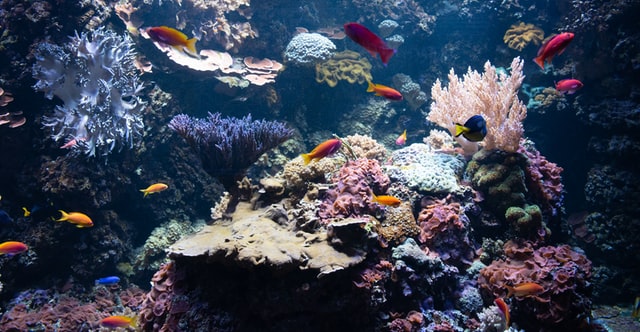
🐠Croaker Fish
This is a delicious fish to eat. The flesh is off-white in color and has a medium taste. This fish is most likely more frequently sold on the East and Gulf Coasts, where it is most likely simply referred to as “Croaker.” A Croaker must be at least nine inches in length for you to retain it. Anything less than this is not permitted, and it will not last long.
🐠Catfish
Catfish have one of the most diverse size ranges within a single order of bony fish. When they are around four point seven inches long, they are the proper size for you to take them home. If they are this small, they can live and even develop.
🐠Zebra Danios
Although Zebra Danios may be seen in a range of habitats, they preferred to dwell in water with a modest amount of current. It is also crucial to remember that while acquiring this sort of fish, you must also obtain a buddy. At least five of them working together can help them survive. When they reach a length of around seven centimeters, they are ready for you to take home.
🐠Goldfish
Goldfish, being important members of the carp family, have the genetics for exceptionally enormous development. They can get them to a size where you can take them home when they are around four inches broad.
🐠Swordtail Fish
Their appeal arises from the ease with which they may be cared for and their tranquil character. They have distinct fins that come in a wide range of colors and are generally directed to as Red or Green swordtails. When they are roughly six and a half inches long, they are ready for you to take home.
How to Care for a Fish the Right Way
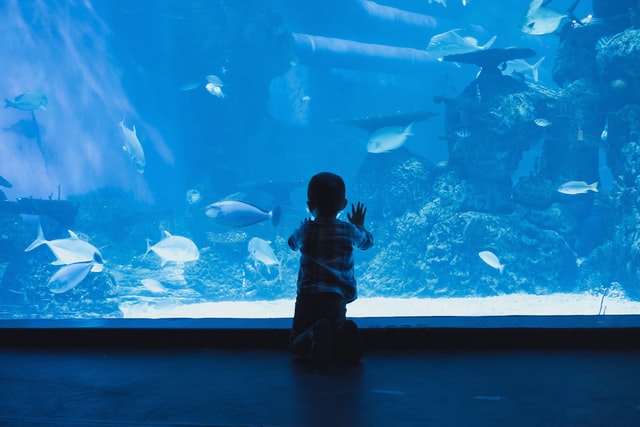
There’s no denying that fish make lovely and amusing pets, but learning how to care for one might be challenging at first. While your care routine may vary based on the variety of fish you possess, these care suggestions will keep you on track regardless of the type of fish you own.
✔️Give Ample Space
One of the most crucial components of caring for a fish is making sure it has enough space. When it comes to fish tanks, bigger is more suitable, according to professionals.
A large aquarium not only provides enough space for your fish to swim and grow but also makes keeping easier. Keeping the heat and pH regulated in a big tank is easier than in a small one.
A bigger tank requires a more significant investment as well as higher ongoing upkeep costs. It is critical to investigate the minimum tank requirements for your selected fish species before investing in the largest tank you can afford.
✔️Maintain Water Balance
The water in your fish tank must maintain the proper pH levels for your fish. Your fish may die if the water gets overly alkaline or acidic. Before you begin balancing your fish tank, learn about the appropriate pH level for your fish’s species, as each type has various environmental needs.
The pH levels in your fish tank will naturally fluctuate over time as water evaporates or objects are added or removed. This is why you should monitor the pH levels on a regular basis. Fortunately, there are natural ways to increase and decrease pH levels rather than using chemicals. Adding moss or driftwood is frequently enough to return the water to safe levels.
✔️Make Their Environment More Comfortable
Maintaining a visually inviting aquarium is part of the happiness of having a fish. While adorning your fish’s house is delightful, it also enhances your fish’s grade of life. Fish enjoy secreting behind and swimming among plants and things.
When selecting goods for your fish tank, keep in mind that they must be appropriate for your fish. Everything from the substrate you utilize to line the base of the tank to the plants and other ornaments might have an effect on your fish. If in doubt, consult a specialist in your fish’s species.
✔️Give your Fishes a Well-Balanced Diet
It’s critical to understand your fish’s dietary needs. Some fish demand lives food, while others choose algae or may thrive on generic fish flakes.
Ensure you don’t overfeed your fish once you’ve determined his appropriate diet. Overeating can harm the health of your fish in the same way that it can harm the health of any other animal. Speak with your veterinarian to decide how much and how frequently you should feed your pet fish.
✔️Properly Clean the Tank
Maintaining your fish tank clean is an important element of fish care. A filthy tank is unsightly and might be hazardous to your fish. Cleaning procedures will differ based on the sort of fish tank you use and the objects you keep within.
You may be capable to manage your aquarium using automated cleaning scrubbers or even snails, but you will still require to replace the water and filters on a routine basis. You must maintain the tank’s substrate and embellishments in addition to the tank itself.
How to Choose a Fish to Keep
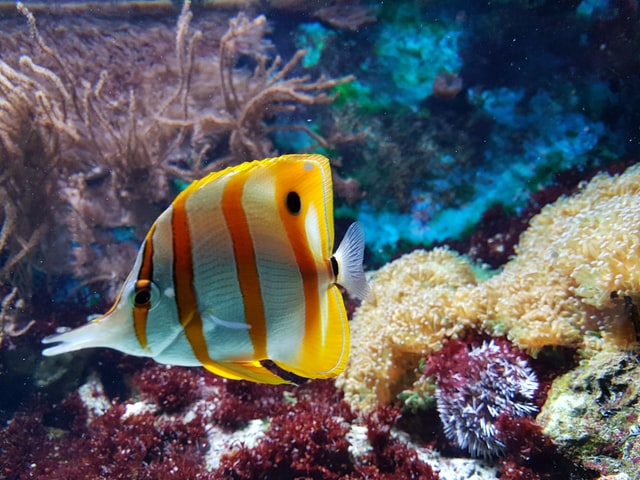
Loading a freshwater tank with fish may be a difficult undertaking. If this is your first time filling a freshwater fish tank, you might be swamped by the very number of species available. To occupy the aquarium, look for fish breeds that, when matures, will accommodate comfortably in the tank.
👍Choose Fish that will be Appropriate for your Tank
When you already have an aquarium, the size of that tank might assist you to decide which fish to buy. Perform some web research to determine how huge a certain species of fish will grow to be. Some fish require a large amount of room or live in a school that will not fit in your aquarium.
👍Begin with Fish that are Simple to Care For
If you’re a new fish owner, stay away from species that are pretty hard to care for. Although fish are a low-maintenance pet, certain species are more difficult to maintain alive and need more of your time and work than others.
👍Get Fishes that are Compatible with One Another
Not all fish breeds will get along in the same fish tank. Choose breeds that will get along well together to create a healthy atmosphere in your tank.
👍Get Fishes that have Comparable Nutritional Requirements
If you intend to have a variety of fish in the very same aquarium, they all should be able to eat the same sort of food. A jar of fish food flakes may be fed to most breeds of “beginning” freshwater fish. Some fish may consume invertebrates or even your other fish.
👍Territorial Fish should not be Kept in a Full Aquarium
Territorial fish will declare an area of the aquarium as their own and will bombard other fish that get too close. If you do decide to buy one or more fish of a territorial species, they will require additional tank space.
The Benefits of Owning an Aquarium

➖Stress Levels are Lower
When you look at a healthy aquarium, it’s challenging to be anxious. There’s something about it that eases you and others around you. This is one of the causes why tanks may be seen in high-stress circumstances such as businesses and hospitals.
Stress management is essential for your entire healthiness and well-being. Not only can spending quality time around your tank support you relax but having a habit for taking care of it may also be good.
➖Sleep Quality Enhances
A restful night’s sleep is essential for long-term health. Sleep allows your body to rejuvenate and heal itself; it also allows your brain to consolidate memories and form new connections. Sleep is difficult for many individuals.
Watching your fish tank before bedtime may help you relax your body and mind enough to go asleep, keeping you from tossing and turning all night. If your fish tank is in the same room where you sleep, it may give some white noise to help you sleep.
➖Blood Pressure and Heart Rate may Reduce
Your body will feel and perform better when you are less stressed and gain more sleep. Having a fish tank, on the other hand, can really help your heart health. Looking at a fish tank might cause your heart rate to lower and your blood pressure to drop.
If you suffer from high blood pressure or other heart-related disorders, having a fish tank in your house might be quite beneficial.
➖Pain and Anxiety may Reduce
It’s nearly mesmerizing to watch a fish tank. Not only does your heart rate reduction and your blood pressure stabilize, but you may also notice that your tension and concern fade. It has been demonstrated that the presence of an aquarium reduces anxiety and suffering in dental patients.
The presence of an aquarium in the waiting area reduced both the level of pain medication required during dental treatments and the amount of pain medication required afterward.
➖Increased Concentration and Creativity
The presence of a fish tank may relax both your body and mind, relieving you of any tension or worry that may be preventing you from reaching your full potential. Having a fish tank at your desk can help you focus and be more creative, allowing you to be more productive.
An active fish tank’s visual stimulation may also have therapeutic advantages, giving your head something else to concentrate on for a few minutes as you work through a difficulty.
➖Children and Alzheimer’s Sufferers Benefit
Though fish tanks can give visual stimulation that might help you focus and be more creative, they can also be incredibly peaceful. This advantage has been demonstrated in both youngsters with hyperactivity issues and Alzheimer’s sufferers.
Aquariums provide more health advantages than just a basic fish tank at home. Spending time at public aquariums has been shown in studies to boost both physical and mental well-being.
Settling on a Spot for your Fish Tank
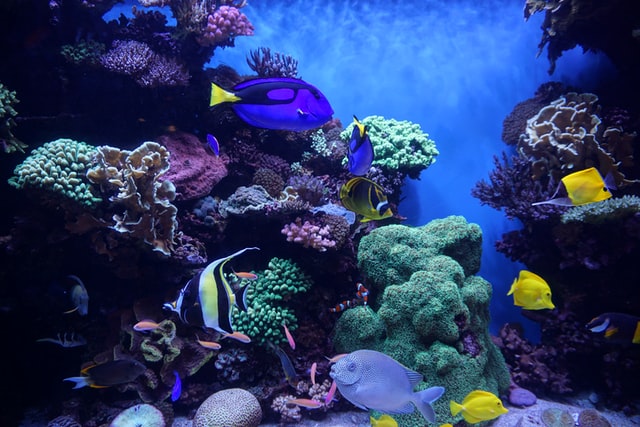
Choosing a site is a thrilling and significant decision for both you and your fish. Because the area you choose for bigger fish tanks will be permanent, choosing the proper position from the outset is critical. Finding a balance between a functional and appealing setting for an aquarium involves some thinking, so here are some ideas to help you find the ideal location.
❕The Sunlight
Take into consideration how accessible your tank will be to a window. Algae, like any other plant, requires sunshine to flourish. As a result, the more sunlight that enters the tank, the faster the algae grows. If you place your fish tank near a window or skylight, you will most certainly have to battle the thick green growth that will appear on your aquarium walls and ornaments.
The water in your fish tank will also warm up as a result of direct sunshine. Fish require consistent water levels or they may get agitated and unwell. Water temperature stability is another cause why fish tanks should not be put too close to radiators or fireplaces.
❕The Accessibility
Ascertain that your aquarium is conveniently accessible. We’ve all seen photos of fish tanks neatly placed away in a shelf corner, and they look fantastic. It may appear nice, tidy, and lovely, but when the time comes to change the water, you will realize you made a mistake.
If you can reach all regions of your aquarium, easy things like providing food for your fish and switching on/off your aquarium lights will be as straightforward as they should be.
❕The Noise
A tank should not be placed in an area with a bunch of noise or high traffic. The vibrations caused by these noises, particularly the opening and closing doors, may startle fish and may cause them to die prematurely.
❕The Visibility
You’ll want to show off your tank after all the effort you’ve put into maintaining it in top shape. Aquariums draw a lot of attention and are a fantastic crowd-pleaser. Choose a place where your tank will be noticeable.
Visibility is also vital so that you can see any fractures or leaks in your tank, as well as readily study your fish’s behavior and promptly detect if they become unwell. Make sure you have enough time to sit back, relax, and observe your fish while reaping the many pleasures that come with having a fish tank.
❕The Electrical Sockets
Make certain that there are electrical outlets nearby your setup. Simultaneously, take care that the tank water does not spill directly into the socket. It is advised that the socket be placed somewhat out to the side, rather than immediately behind the tank.
Frequently Asked Questions
Q: Why must fish be a specific size to be kept?
A: It is based on the fact that in many species, a more mature adult has a greater number of successful progeny, and they grow throughout their lives.
Q: Can I keep the fish that I catch?
A: After-catch storage is as simple as having access to ice and/or refrigeration. Keep them alive or cooled with ice from the time it is captured until it is stored.
Q: Why do we discard little fish?
A: The most common reason that fishermen toss them back into the water is when they are participating in sport fishing when they capture and release the fish to help protect the species.
Q: Is it true that fish absorb negative energy?
A: A tank is said to be capable of producing a large quantity of positive energy. It also has the ability to absorb negative energy.
Q: Can a fish drown?
A: They do not technically drown since they do not ingest the water, but they do perish due to a lack of oxygen.
Final Thoughts
It is critical to understand the proper and acceptable size for various fishes that you intend to keep. They must reach a certain size in order to survive and thrive. Doing your own research or seeking advice from an expert might assist you in selecting the best fish for your tank.

